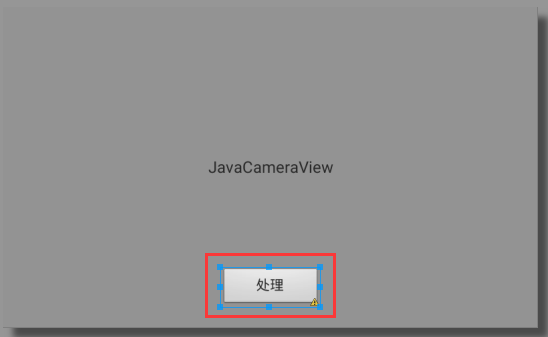編輯:關於android開發
分類:C#、Android、VS2015;
創建日期:2016-02-11
TableLayout也是用行和列劃分單元格,但不會顯示Row、Column以及Cell的邊框線,其子元素有許多TableRow組成,每個TableRow定義表的一行(Row),每個Row擁有0個或多個單元格(Cell),每個Cell擁有一個View對象。
使用TableLayout時,應注意每個cell的寬度。
TableLayout可設置的屬性包括全局屬性及單元格屬性。
1、全局屬性
android:stretchColumns 設置可伸展的列,最多可占據一整行。
android:shrinkColumns 設置可收縮的列,即將該列向下擠壓(變高了)。
android:collapseColumns 設置要隱藏的列。
例如:
android:stretchColumns="0" 第0列可伸展
android:shrinkColumns="1,2" 第1,2列皆可收縮
android:collapseColumns="*" 隱藏所有行
說明:某一列可以同時設置stretchColumns及shrinkColumns屬性,即這一列根據寬度情況既可以伸展,又可以收縮。
2、單元格屬性
android:layout_column 指定該單元格在第幾列顯示
android:layout_span 指定該單元格占據的列數(未指定時,默認為1)
例如:
android:layout_column="0" 該控件顯示在第1列
android:layout_span="2" 該控件跨2列
3、橫向平均分布各列
如果希望平均分布各列,將每列寬度設置為最小即可。另外,GridLayout雖然也能平均分布各列(見上一個例子),但顯然沒有用TableLayout方便。
總之,如果希望平均分布各列,應該用TableLayout實現而不是用GridLayout去實現。
1、運行截圖
<?xml version="1.0" encoding="utf-8"?>
<LinearLayout xmlns:android="http://schemas.android.com/apk/res/android"
android:orientation="vertical"
android:layout_width="fill_parent"
android:layout_height="fill_parent">
<TextView
android:layout_width="wrap_content"
android:layout_height="wrap_content"
android:textColor="#ff0000"
android:text="用法(1)--平均分布各列(指定寬度為1dip)"
android:layout_margin="5dp" />
<TableLayout
android:layout_width="fill_parent"
android:layout_height="wrap_content"
android:stretchColumns="*"
android:padding="3dip">
<TableRow>
<TextView
android:text="第0列"
android:layout_width="1dip"
android:background="#7f00ffff"
android:layout_margin="5dp"
android:layout_gravity="center_vertical" />
<TextView
android:text="第1列"
android:layout_width="1dip"
android:background="#7f00ffff"
android:layout_margin="5dp"
android:layout_gravity="center_vertical" />
<TextView
android:text="第2列(字數較多)"
android:layout_width="1dip"
android:background="#7f00ffff"
android:layout_margin="5dp"
android:layout_gravity="center_vertical" />
</TableRow>
</TableLayout>
<TextView
android:layout_width="wrap_content"
android:layout_height="wrap_content"
android:textColor="#ff0000"
android:text="用法(2)--自動分布各列(不指定寬度)"
android:layout_margin="5dp" />
<TableLayout
android:layout_width="fill_parent"
android:layout_height="wrap_content"
android:stretchColumns="*"
android:padding="3dip">
<TableRow>
<TextView
android:text="第0列"
android:background="#7f00ffff"
android:layout_margin="5dp"
android:layout_gravity="center_vertical" />
<TextView
android:text="第1列"
android:background="#7f00ffff"
android:layout_margin="5dp"
android:layout_gravity="center_vertical" />
<TextView
android:text="第2列(字數較多)"
android:background="#7f00ffff"
android:layout_margin="5dp"
android:layout_gravity="center_vertical" />
</TableRow>
</TableLayout>
<TextView
android:layout_width="wrap_content"
android:layout_height="wrap_content"
android:textColor="#ff0000"
android:text="用法(3)--兩端對齊"
android:layout_margin="5dp" />
<TableLayout
android:layout_width="fill_parent"
android:layout_height="wrap_content"
android:stretchColumns="1">
<TableRow>
<TextView
android:layout_column="1"
android:text="打開..."
android:padding="3dip" />
<TextView
android:text="Ctrl-O"
android:gravity="right"
android:padding="3dip" />
</TableRow>
<TableRow>
<TextView
android:layout_column="1"
android:text="保存..."
android:padding="3dip" />
<TextView
android:text="Ctrl-S"
android:gravity="right"
android:padding="3dip" />
</TableRow>
<View
android:layout_height="2dip"
android:background="#FF909090" />
<TableRow>
<TextView
android:text="X"
android:padding="3dip" />
<TextView
android:text="導入..."
android:padding="3dip" />
</TableRow>
<TableRow>
<TextView
android:text="X"
android:padding="3dip" />
<TextView
android:text="導出..."
android:padding="3dip" />
<TextView
android:text="Ctrl-E"
android:gravity="right"
android:padding="3dip" />
</TableRow>
</TableLayout>
<TextView
android:layout_width="wrap_content"
android:layout_height="wrap_content"
android:textColor="#ff0000"
android:text="用法(4)--伸展、收縮、隱藏、跨多列"
android:layout_margin="5dp" />
<TableLayout
android:layout_width="fill_parent"
android:layout_height="wrap_content"
android:stretchColumns="0"
android:shrinkColumns="1"
android:collapseColumns="2"
android:padding="3dip">
<TableRow>
<TextView
android:background="#7f00ffff"
android:layout_margin="5dp"
android:text="第0列(可伸展)" />
<TextView
android:background="#7f00ffff"
android:layout_margin="5dp"
android:text="第1列(可收縮)" />
<TextView
android:background="#7f00ffff"
android:layout_margin="5dp"
android:text="第2列(隱藏了)" />
<TextView
android:background="#7f00ffff"
android:layout_margin="5dp"
android:text="第3列" />
</TableRow>
<TableRow>
<TextView
android:background="#7f00ffff"
android:layout_margin="5dp"
android:text="第0列(可橫向伸展)" />
<TextView
android:background="#7f00ffff"
android:layout_margin="5dp"
android:text="第1列(可收縮,即縱向拉伸)" />
<TextView
android:background="#7f00ffff"
android:layout_margin="5dp"
android:text="第2列(跨2列)"
android:layout_span="2" />
</TableRow>
</TableLayout>
</LinearLayout>
3、添加Demo03TableLayout.cs文件
在SrcDemos文件夾下添加該文件。
using Android.App;
using Android.OS;
namespace ch07demos.SrcDemos
{
[Activity(Label = "Demo03TableLayout")]
public class Demo03TableLayout : Activity
{
protected override void OnCreate(Bundle savedInstanceState)
{
base.OnCreate(savedInstanceState);
SetContentView(Resource.Layout.Demo03TableLayout);
}
}
}
 OpenCV學習筆記(七)—— OpenCV for Android實時圖像處理
OpenCV學習筆記(七)—— OpenCV for Android實時圖像處理
OpenCV學習筆記(七)—— OpenCV for Android實時圖像處理 在上篇中我們已經實現了相機打開和實時圖像信息的獲取,那麼接下來我們可以嘗
 自定義控件之 圓形 / 圓角 ImageView,圓角imageview
自定義控件之 圓形 / 圓角 ImageView,圓角imageview
自定義控件之 圓形 / 圓角 ImageView,圓角imageview一、問題在哪裡? 問題來源於app開發中一個很常見的場景——用戶頭像要展示
 初識Activity,騰訊視頻初識虛擬化
初識Activity,騰訊視頻初識虛擬化
初識Activity,騰訊視頻初識虛擬化 CallbackDescription onCreate() This is the first callback and
 讓TextView出現跑馬燈效果,textview跑馬燈效果
讓TextView出現跑馬燈效果,textview跑馬燈效果
讓TextView出現跑馬燈效果,textview跑馬燈效果 只需要在TextView中添加一些屬性即可: <?xml version=1.0 encoding=